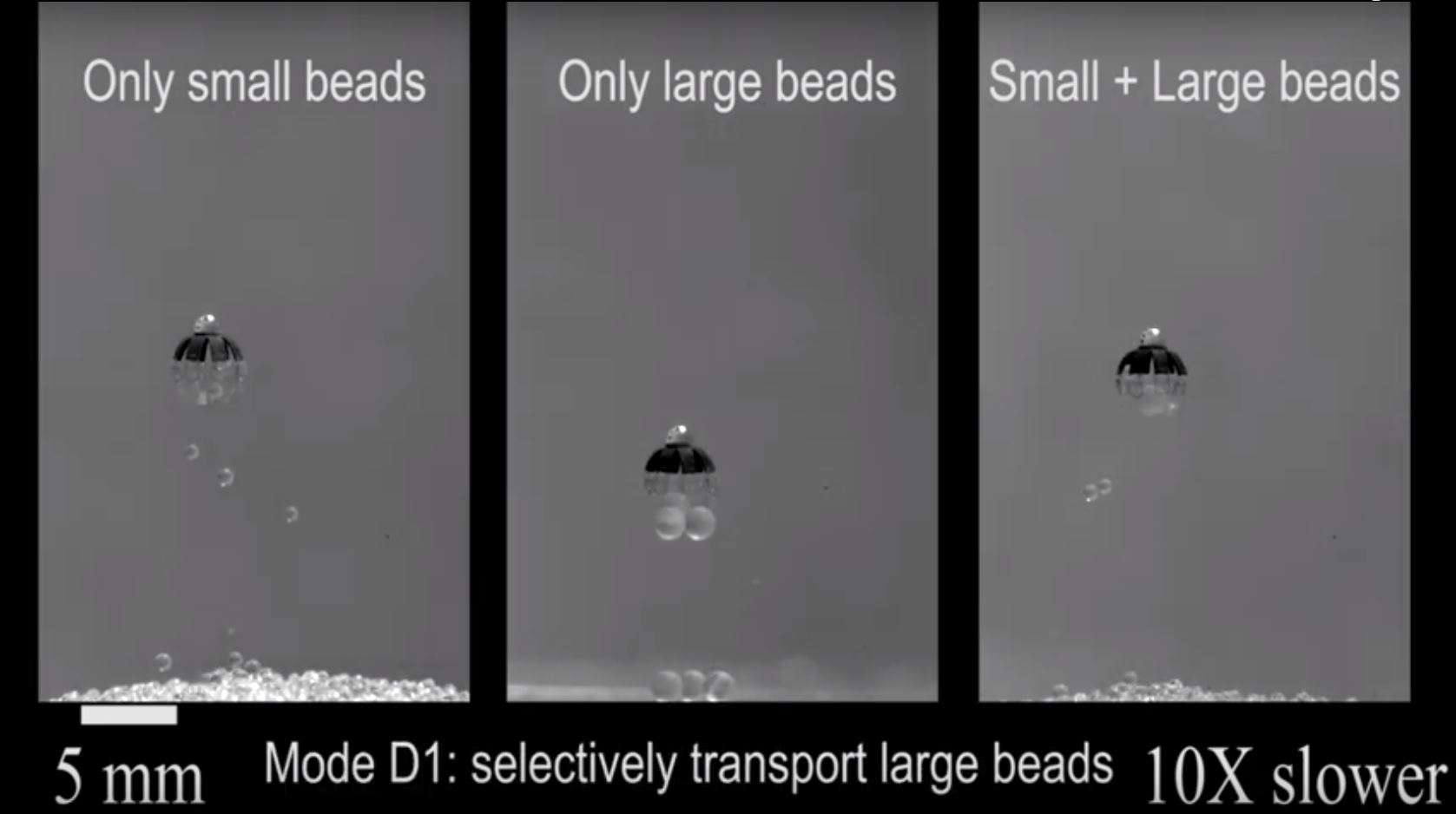Media Release
From: Springer NatureEngineering: Tiny, jellyfish-inspired multi-functional robots
An untethered soft robot a few millimetres in size that is inspired by larval jellyfish (scyphomedusae ephyra), and can perform functions including transporting objects and burrowing, is reported this week in Nature Communications. The study shows that the robot can manipulate the water flowing around its body in order to complete a series of tasks.
Swimming robots hold promise in biomedical and environmental applications. However, despite the existence of miniature robotic designs capable of swimming, advanced functionalities, such as complicated object manipulation, are challenging as robot size decreases. This is because of limitations in the size of onboard components.
Metin Sitti and colleagues designed and built a robot a few millimetres in size by connecting a magnetic composite elastomer core (with a diameter of 3mm) to eight bendable lappets (flaps). Upon the application of an oscillating magnetic field, the lappets contract and recover like a swimming jellyfish. In addition to swimming, their jellyfish-like robot can selectively transport beads of different sizes to mimic food catching, burrow into fine beads to escape from ‘predators’ or target objects, mix different fluids, and generate a chemical path in its wake. The authors argue that their robotic design could also be used as a model system to help understand how changes in the environment impact the survival of ephyra jellyfish.


